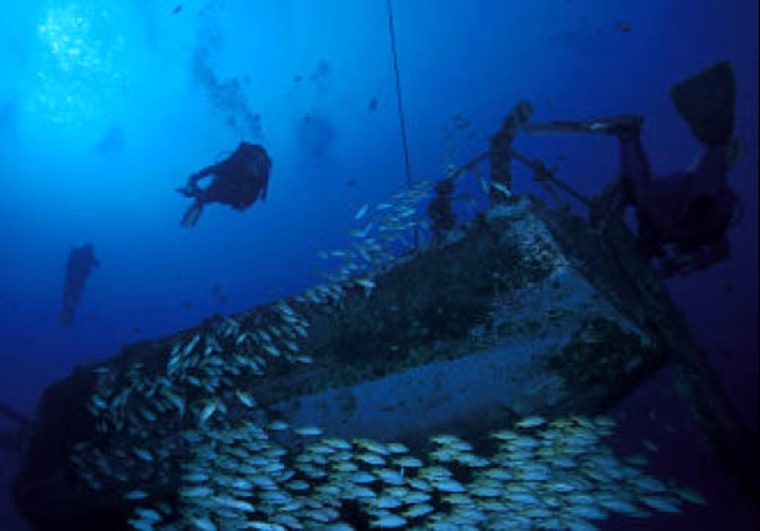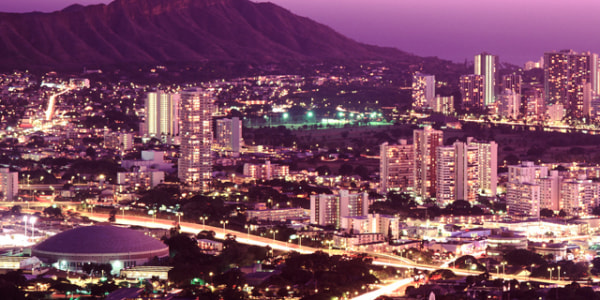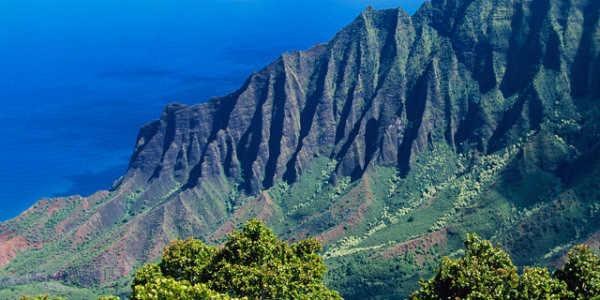Hawaii is everywhere. It’s in our clothing design, on television, part of our culture ... but mostly it’s in our dreams. When the idea of a tropical paradise comes up, the first place that comes to the world’s collective imagination of island perfection is Hawaii.
Waterfalls here seem to seek out only the loveliest cliffs and hillsides to cascade down. The rainforests are lush with greens, unique flora and fauna and everything that exudes exotic-ness but always seems inviting — like the kind of place you could take a family stroll.
There are impenetrable red-rock canyons, silk-sand beaches that stretch off to the horizon, steaming volcanos that flow hot and red into the sea and fields of freshly-hardened, black lava that look like a sunburnt moonscape. There’s also something inspiring about a culture where flip-fl ops, T-shirts and shorts are daily attire. Hawaii offers a vast realm of discovery and exploration. And then there is the sea …
The ocean defines Hawaii for most visitors, especially divers. It’s a place where the chaos of evolution has taken bold steps to enthrall and surprise even the most well-traveled bubbleblower. A place where massive schools of spinner dolphins, green sea turtles, manta rays, reef sharks and whales share space with tiger morays, rockmovers and endemic fish whose one imperative while evolving seems to have been to become the most colorfully and interestingly designed species in the sea. And it’s common to see most of these distinctive creatures on a single dive.
Slideshow 10 photos
The heart of Hawaii
Off these shores are a lifetime of deep-blue adventures. What’s even more remarkable about Hawaii is that although it’s such an integral part of our tropical island consciousness, it’s the most remote chain of islands on earth. Its closest neighbors
are more than 1,000 miles from Hawaii’s idyllic shores. It’s literally in the middle of nowhere, an accidental sprinkle of volcanic treasure smack in the center of the vast field of the Pacific Ocean.
The islands of Hawaii exist in that rare realm of Polynesian perfection that will always leave you yearning for more.
Gathering place
Scarcely a person alive cannot conjure an image of Waikiki, Pearl Harbor, hula or the famous waves of the North Shore. Oahu has made a deep impression on the world. It has a little bit of everything. For divers, though, Oahu means wrecks. The most famous of these is the legendary Mahi, which resides at 95 feet on a sandy seafloor off the Waianae coast. This one-time cable-layer has become the gathering place for the area’s marine life.
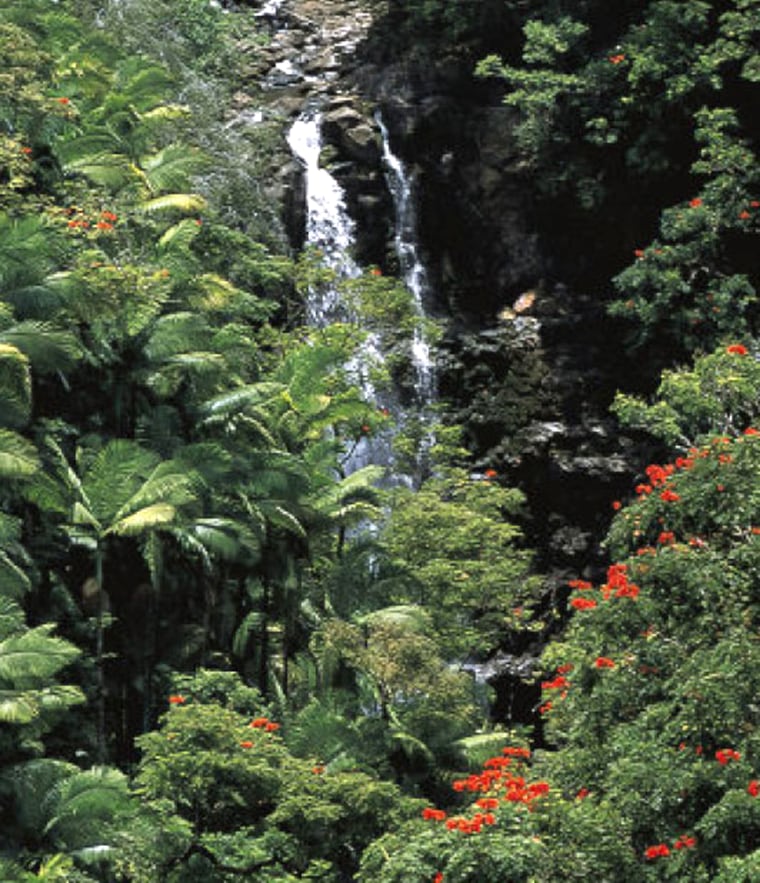
Spotted eagle rays school around the mast, large aggregations of blue-striped snapper come so thick they literally block the view of the wreck, and pennant butterfly fish flit and flow among the shadows. There’s a resident moray that lives in the cable spooling mechanism at the bow. And all kinds of passing pelagics visit the wreck, including tiger sharks and green sea turtles. Closer to the cosmopolitan shores of Waikiki, you’ll find two intriguing wrecks, the YO-257 and a WWII Corsair.
The transformation of the YO-257 from machine of war to reef has been startling. It has become inundated with soft corals and marine life. The Corsair, a result of pilot error (he ran out of gas on the way back to the airstrip), makes a unique experience for the logbook. It still makes for a great photo op, with the hordes of butterfly fish that pour over the wreck. It should not be missed while in Oahu. Wrecks aren’t the only undersea attraction off Oahu. If you’re interested in seeing Hawaii’s singular variety of endemic species (almost 30 percent of everything you see is unique to Hawaii!) there’s only one place to go: Hanauma Bay.
It is perhaps the world’s most famous snorkeling beach. This lovely caldera is strikingly beautiful and literally packed with marine life (the result of food pellets offered by the tourists). There’s also a spectacular collection of volcanic caverns, home to stonefish, sharks and turtles. For a funky addition to your logbook, head off to the sharky site called the Electric Plant. For something that will cause your thrill vein to tingle, head to the surfer’s enclave of Haleiwa on the North Shore.
Here, you’ll head out into open water, jump in a cage and be surrounded by dozens of sharks – Galapagos, bull, oceanic whitetip and dusky, all vying for your attention. At the end of the day, head down to Waikiki for a beachside Mai Tai. The tiki torches light up the busy waterfront and the sound of the waves, whose lives began thousands of miles away, will lull you into a dream state.
The Big Island
The ancestral home of Pele, the Hawaiian goddess of volcanoes, the Big Island teems with life. It also has 12 of the world’s 16 climate zones within its boundaries, so every corner and turn of this island is unique. This diversity has seeped into the waters that surround its shores. A virtual dive town, Kailua-Kona, on the island’s western shore, is crowded with dive flags – and for good reason. Just offshore, incredibly clear water harbors a wild variety of underwater experiences.
From January through March, pods of humpback whales come to give birth off these shores, their songs providing an enchanting soundtrack to every dive adventure. In the open water within sight of shore, pilot whales are frequently seen, often followed by oceanic whitetip sharks. Huge aggregations of dolphins fill the waters, making surface intervals spectacular with their aerial acrobatics.
Close to shore, the dive sites that dot the area have become world-famous. At Garden Eel Cove, massive manta rays come in at night to feed on tiny krill and other organisms attracted to lights set on the sea floor. It’s a world-class site, with an experience straight from Close Encounters of the Third Kind. City of Refuge and Turtle Pinnacle attract green sea turtles by the dozens to their cleaning stations, and after a good cleaning these turtles will often pull themselves ashore for a nap.
The lava substrate has riddled the shoreline with underwater caverns and arches in which you’ll find nurse sharks, legions of squirrelfish and every kind of ray of light imaginable. Sequestered in the nooks and crannies of the dive sites, you’ll find brightly colored frogfish, dragon, zebra, whitemouth and yellowmargin morays, and fluttering extravagances of endemic milletseed butterfly fish. There’s even an extremely photogenic wreck, the Naked Lady, right in the Kona harbor.
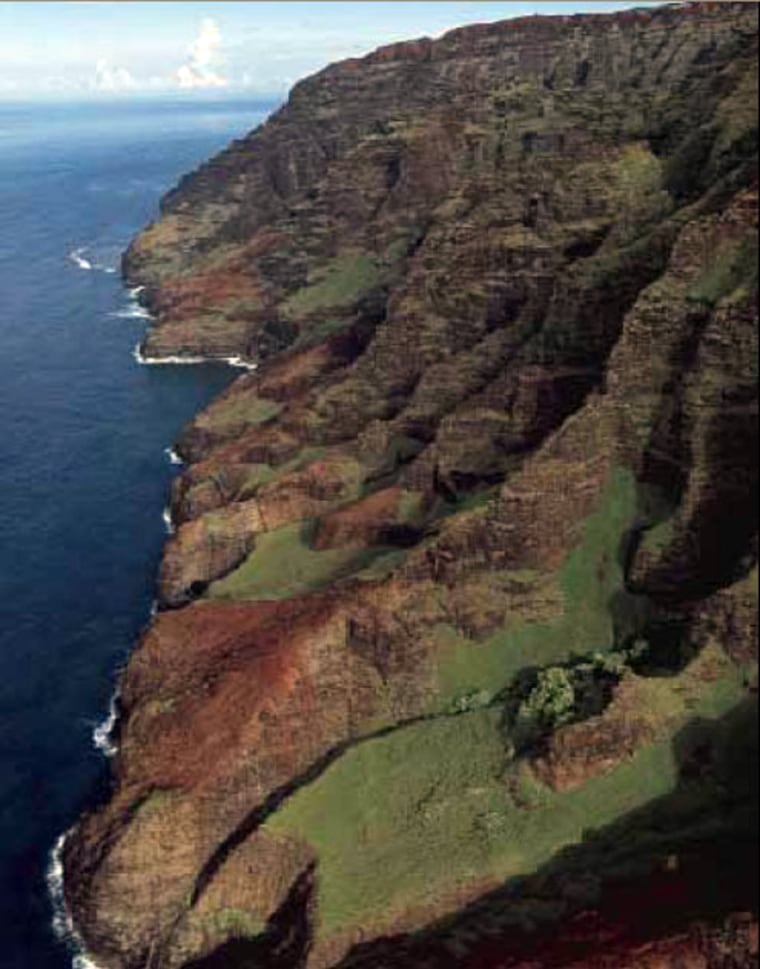
For a thrilling treat, head out at night for an open water drift dive. You’ll hook onto a floating downline and encounter some of the most otherworldly inhabitants of the sea. Larval marine creatures along with deep- water denizens come up to the surface at night to feed and get eaten. Almost every speck you’ll see is alive and, upon close inspection, more alien-like than anything else you’re ever likely to see in the sea.
Spectacular diving also can be had along the mostly uninhabited Kohala Coast, just northwest of Kona, famous for its pristine hard coral gardens and lava formations, massive turtles and abundance of whitetip reef sharks, as well as its blissful lack of crowds.
Garden Isle
Known as the Garden Isle, Kauai should change its name to Hollywood’s Preferred Backlot. It seems every inch of this lush island has appeared in a TV show or movie. Perhaps its two most famous natural features are the indescribable and awe-inspiring
Slideshow 17 photos
Hawaiian paradise
Na Pali Coast and the spectacular Waimea Canyon. In between are about a zillion waterfalls and the wettest spot on earth, Mount Waialeale. With some of the most memorable scenery on the planet, it’s a mecca for hikers, mountain bikers, producers, adventurous types and, of course, divers.
The holy grail of diving in Hawaii, about a 45-minute boat ride away, comes with the menacing moniker the “Forbidden Island,” Ni’ihau. At sites like Ni’ihau Arches and Lehua Rock, divers frequently encounter endangered monk seals, eagle rays and blacktip reef sharks, as well as a busy metropolis of marinelife, from huge schools of pennant, pyramid and milletseed butterflyfish to hawkfish, octopus and even rare morwongs.
Off Kauai, most of the diving is centered around Poipu Beach. Here you’re (almost certainly) guaranteed to encounter green sea turtles, often by the dozen. Sheraton Caverns lays claim to being the unofficial local hangout for these fascinating marine creatures. But they’re not the only attraction. You’ll also find loads of bluestripe snapper, whitetips and, for the observant, stunning nudibranchs, tiger cowries, leaffish, turkeyfish, triton trumpet shells (they’ll eat a crown-of-thorns starfish out of your hand) and 7-11 crabs.
The Magic Isle
From the “House of the Sun,” Mount Haleakala, through the remarkable beauty of the Hana Road, and offshore to the one-of-a-kind diving off Molokini Crater, Maui features a complete set of the elements that define paradise. Still relatively unfettered by mass tourism, Maui revels in its pastoral charms, especially in the Upcountry of East Maui, where you’ll find horse ranches, goat and lavender farms, stunning scenery and even a winery – but it’s not without its share of top eateries and luxury resorts.
Maui is also considered to have the greatest variety of diving in the Hawaiian Islands. Abundant sea turtles and sharks, and huge numbers of fish, define the underwater landscape here. Humpback whales crowd the sea during their birthing season, often causing roadblocks with their nearshore leaps. Diving the island of Molokai is like descending into a Wild West shootout – thrilling, unpredictable, seat-of-your-pants kind of diving. During most dives, lemon butterfly fish accompany divers like bright yellow leaves in an autumn wind. And the night diving here is modestly described as spectacular.
Spanish dancer nudibranchs often take off like magic carpets during night dives, while eels, cowries, slipper and bull’s-eye lobsters and a host of other nocturnal denizens will keep your dive light humming. There are new sites being discovered all the time.
Almost a second home for Maui divers is the nearby island of Lanai, which seems to exist solely for the pleasure of divers. Here you’ll find the world-famous lava domes of First and Second Cathedral, where shafts of light pierce the caverns like a thousand radiant swords.
Beyond that is an incredible diversity of dive sites, in which a great variety of marine creatures play out their lives around this diver’s playground. The site called Pyramids gets its name from the sheer number of pyramid butterflyfish that flit around the top of the pinnacle. At another site, Fish Rock, menpachi, pipefish, viper moray, large cowries and whitetips headline a Hawaiian who’s who list that will
have you poring over ID books for hours after a day of diving – and that’s just on the reef. Look to the blue and you’ll have a good chance of seeing spotted eagle rays, manta rays and passing sharks, and from November to May, perhaps even humpback whales.
For more information check out www.visitmaui.com or call 800-525-MAUI.
As the official publication of the is the magazine divers turn to each month to find out what’s going on in their world. Sport Diver is the ultimate source for up to date information on dive culture, equipment, travel, training and PADI Diving Society activities.
